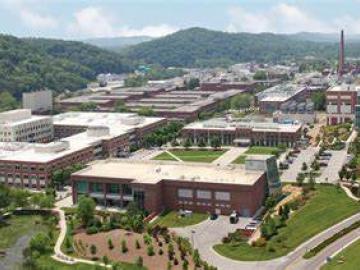Filter News
Area of Research
- Advanced Manufacturing (3)
- Biological Systems (1)
- Biology and Environment (10)
- Clean Energy (45)
- Computational Biology (1)
- Electricity and Smart Grid (1)
- Fusion and Fission (20)
- Fusion Energy (4)
- Isotopes (5)
- Materials (16)
- National Security (13)
- Neutron Science (8)
- Nuclear Science and Technology (17)
- Supercomputing (13)
News Type
News Topics
- (-) 3-D Printing/Advanced Manufacturing (37)
- (-) Biomedical (27)
- (-) Cybersecurity (14)
- (-) Grid (23)
- (-) Nuclear Energy (54)
- Advanced Reactors (7)
- Artificial Intelligence (39)
- Big Data (24)
- Bioenergy (47)
- Biology (54)
- Biotechnology (10)
- Buildings (22)
- Chemical Sciences (21)
- Clean Water (15)
- Climate Change (48)
- Composites (6)
- Computer Science (81)
- Coronavirus (18)
- Critical Materials (2)
- Decarbonization (44)
- Emergency (2)
- Energy Storage (34)
- Environment (104)
- Exascale Computing (21)
- Fossil Energy (3)
- Frontier (20)
- Fusion (29)
- High-Performance Computing (38)
- Hydropower (5)
- Isotopes (24)
- ITER (2)
- Machine Learning (20)
- Materials (38)
- Materials Science (46)
- Mathematics (5)
- Mercury (7)
- Microelectronics (2)
- Microscopy (22)
- Molten Salt (1)
- Nanotechnology (20)
- National Security (33)
- Net Zero (6)
- Neutron Science (46)
- Partnerships (11)
- Physics (30)
- Polymers (10)
- Quantum Computing (15)
- Quantum Science (25)
- Renewable Energy (1)
- Security (11)
- Simulation (25)
- Software (1)
- Space Exploration (11)
- Summit (29)
- Sustainable Energy (40)
- Transformational Challenge Reactor (3)
- Transportation (30)
Media Contacts

ORNL researchers modeled how hurricane cloud cover would affect solar energy generation as a storm followed 10 possible trajectories over the Caribbean and Southern U.S.

Rishi Pillai and his research team from ORNL will receive a Best Paper award from the American Society of Mechanical Engineers International Gas Turbine Institute in June at the Turbo Expo 2024 in London.

ORNL’s Erin Webb is co-leading a new Circular Bioeconomy Systems Convergent Research Initiative focused on advancing production and use of renewable carbon from Tennessee to meet societal needs.

Scientists at ORNL have developed 3D-printed collimator techniques that can be used to custom design collimators that better filter out noise during different types of neutron scattering experiments
ORNL scientists have determined how to avoid costly and potentially irreparable damage to large metallic parts fabricated through additive manufacturing, also known as 3D printing, that is caused by residual stress in the material.

Canan Karakaya, a R&D Staff member in the Chemical Process Scale-Up group at ORNL, was inspired to become a chemical engineer after she experienced a magical transformation that turned ammonia gas into ammonium nitrate, turning a liquid into white flakes gently floating through the air.

Three staff members in ORNL’s Fusion and Fission Energy and Science Directorate have moved into newly established roles facilitating communication and program management with sponsors of the directorate’s Nuclear Energy and Fuel Cycle Division.

Scientists at ORNL are looking for a happy medium to enable the grid of the future, filling a gap between high and low voltages for power electronics technology that underpins the modern U.S. electric grid.

New computational framework speeds discovery of fungal metabolites, key to plant health and used in drug therapies and for other uses.

Researchers at ORNL became the first to 3D-print large rotating steam turbine blades for generating energy in power plants.




